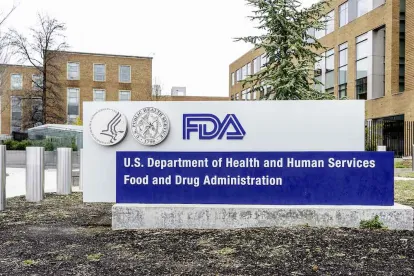On Sept. 30, 2021, the Food and Drug Administration issued its long-awaited draft guidance for industry regarding the use of real-world data and evidence to support FDA regulatory decision-making relating to the effectiveness and safety of drugs and biologics.
Although FDA has long used real-world data and evidence to monitor and evaluate the safety of drugs and biologics after FDA approval, FDA’s use of real-world data and evidence to support decisions to approve a new drug or biologic or new indication has been much more limited. Recently, however, real-world data and evidence have played an increasingly significant role in FDA’s safety and effectiveness determinations.
PDUFA VI and the 21st Century Cures Act (“the Cures Act”) require FDA to take certain steps to build the Agency’s real-world data and evidence program. In particular, the Cures Act requires FDA to establish a program to evaluate the potential use of real-world data and evidence for (a) supporting FDA-approval of a new indication for an FDA-approved drug and (b) supporting or satisfying post-approval study requirements. The Cures Act further requires FDA to issue this real-world data and evidence guidance in support of that program.
As Congress made clear in the Cures Act, the use of real-world information does not lower or otherwise alter the evidentiary standard required by the Federal Food, Drug, and Cosmetic Act or the Public Health Service Act for FDA’s approval of drugs and biologics. As such, most of the guidance is devoted to FDA’s recommendations on how to maximize and ensure the accuracy, completeness, and relevance of the real-world data and evidence used. In particular, the guidance recommends that:
-
Sponsors submit their protocols and statistical analysis plans to FDA before conducting the non-interventional study;
-
Each data source used for the study should be evaluated to determine whether the available data and information are appropriate for assessing the study’s hypothesis;
-
The sponsor’s protocol and plan should mitigate or otherwise account for important data that are expected to be missing from the data source;
-
Where appropriate, sponsors should validate that the data being pulled and used are appropriate for assessing the endpoints of interest;
-
Study protocols and plans should (a) clearly define the various time periods pertinent to the study design, (b) include a detailed description of the methods for determining how population inclusion and exclusion criteria will be implemented, (c) demonstrate that the data can be used to identify the specific products of interest and the duration of exposure to the products, (d) carefully consider, and validate where appropriate, the availability, accuracy, and completeness of the data on the outcome of interest, and (e) adequately account for key covariates (including confounders and effect modifiers); and
-
The study protocol and analysis plan should specify the data’s provenance to ensure its integrity.
The FDA has acknowledged that as research methods and technologies continue to evolve, and as the quality of real-world data improve along with the analytical methods, real-world data and evidence may play an increasing role in FDA’s regulatory decisions. FDA’s issuance of this draft guidance is an important step in that direction.
Persons wishing to submit comments on the draft guidance document should do so by Nov. 29, 2021, to ensure the comments are considered by the FDA. Click here to view the Federal Register announcement for the draft guidance.





 />i
/>i

